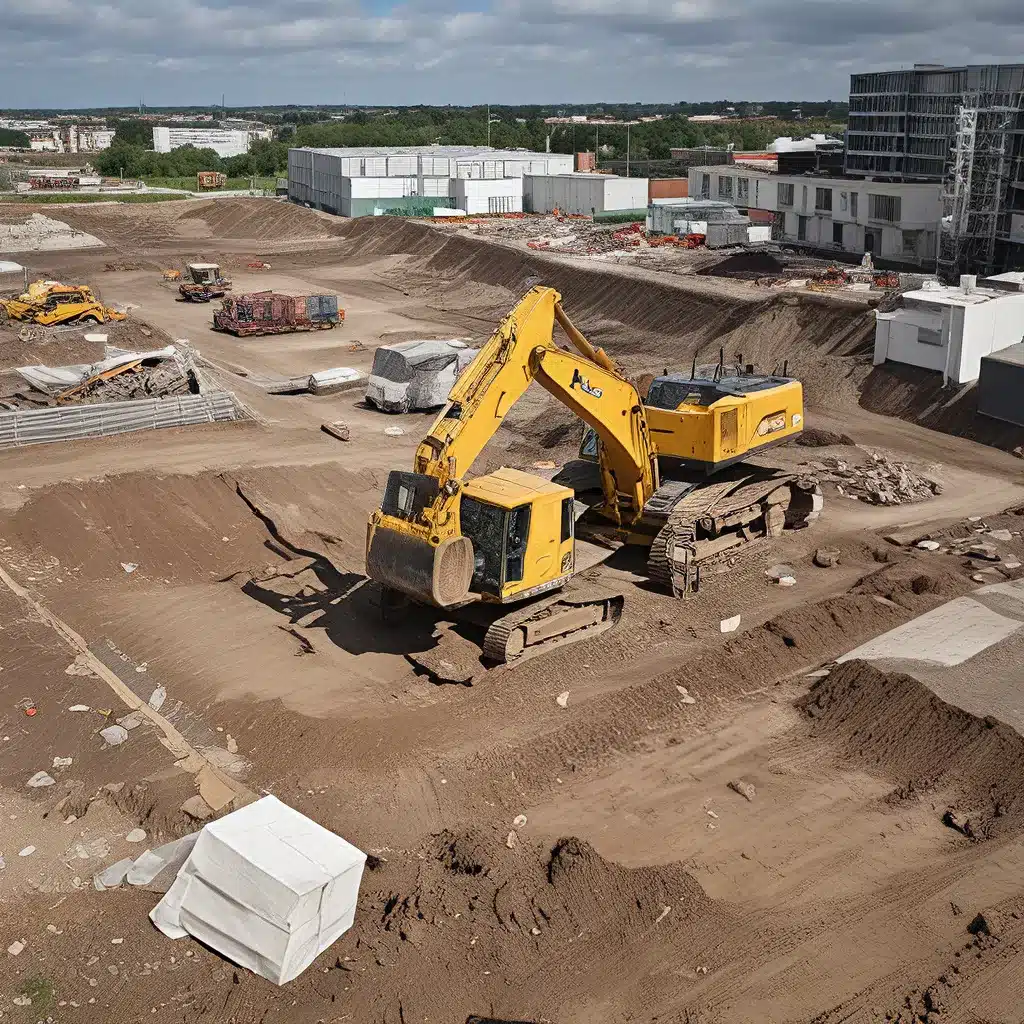
Unlocking the Potential of Brownfield Sites
Have you ever walked past an abandoned, dilapidated building and wondered, “What could that be?” More often than not, these eyesores are what’s known as ‘brownfield sites’ – vacant or underutilized properties where actual or suspected environmental issues have created a barrier to redevelopment.
It’s a challenge that communities across the country are grappling with, but some are finding innovative ways to turn these liabilities into assets. And as someone passionate about environmental stewardship and community revitalization, I’m excited to share their stories with you.
Brownfields: Blight or Boon?
Brownfield sites can come in all shapes and sizes – from former manufacturing plants and abandoned gas stations to old warehouses and even some vacant lots. The common thread is that real or perceived environmental contamination has left these properties in limbo, unable to be easily repurposed or redeveloped.
According to the Louisiana Department of Environmental Quality (LDEQ), these types of sites “are often intimidating, creating a barrier to the redevelopment or expanded use of these sites.” But what if I told you that with the right approach, these liabilities could actually become community assets?
Brownfield Transformation: A Win-Win Scenario
The key is to reframe our mindset – to see these contaminated sites not as problems, but as opportunities. By addressing the environmental challenges and facilitating the redevelopment of brownfield properties, we can unlock a host of benefits for local communities.
For one, it helps tackle the issue of legacy contamination at abandoned sites, as exemplified by the cleanup efforts in the Argentine neighborhood of Kansas City, Kansas. By remediating these polluted areas, we can reduce the risk of exposure for residents and transform eyesores into community assets.
But the benefits don’t stop there. Redeveloping brownfield sites can also:
- Boost the local tax base: By returning these properties to productive use, communities can increase their tax revenues and fund important public services.
- Create jobs: Cleanup and construction efforts provide employment opportunities, while the redeveloped sites can host new businesses and industries.
- Revitalize neighborhoods: Transforming blighted areas into vibrant, functional spaces can breathe new life into a community and improve quality of life for residents.
- Leverage existing infrastructure: Reusing brownfield sites often allows communities to capitalize on roads, utilities, and other infrastructure already in place, rather than investing in costly new development.
It’s a win-win scenario that’s captured the attention of federal, state, and local governments – and for good reason. According to the LDEQ, Louisiana has received over $25 million in EPA Brownfield funding, which has been leveraged to address environmental concerns at more than 400 sites statewide.
Navigating the Brownfield Redevelopment Process
Of course, turning a brownfield site into a community asset isn’t as simple as waving a magic wand. There are a number of crucial steps involved, from environmental assessments and cleanup to securing the necessary funding and navigating complex regulatory hurdles.
The LDEQ’s Brownfields Program plays a vital role in this process, partnering with federal, state, and local resources to facilitate the reuse of these properties. They provide technical assistance, case studies, and funding opportunities to help communities overcome the financial and regulatory barriers that often stand in the way of redevelopment.
One of the program’s key initiatives is the Targeted Brownfield Assessment (TBA) Program, which supports community-based brownfield projects by covering the costs of environmental assessments and cleanup. This helps to reduce the financial burden on local governments and nonprofits, making the process more accessible and achievable.
But the LDEQ doesn’t stop there. They also administer a Brownfield Cleanup Revolving Loan Fund (BCRLF), which provides low-interest loans to facilitate the cleanup of contaminated sites. And through their Voluntary Remediation Program (VRP), they offer a mechanism for property owners, potential owners, and others to address environmental issues and receive liability protection – a crucial consideration for developers.
Transforming Liabilities into Assets: Success Stories
As I mentioned earlier, there are countless examples of communities across the country that have successfully transformed their brownfield sites into thriving, productive spaces. And Louisiana is no exception.
Just look at the Kansas City Structural Steel Site in Kansas City, Kansas – a former industrial site that was plagued by soil and groundwater contamination for decades. Through a concerted cleanup effort and community partnership, that site has been transformed into a source of local pride, serving as a testament to the power of environmental restoration and strategic redevelopment.
Closer to home, the LDEQ has supported the revitalization of numerous brownfield sites across Louisiana, including the Commerce Building in Baton Rouge, the Former Schwegmann’s in New Orleans, and the Shreveport Convention Center in Shreveport. Each of these projects has breathed new life into their respective communities, creating jobs, increasing the tax base, and turning once-blighted areas into vibrant hubs of activity.
Embracing the Future: Brownfield Redevelopment and Sustainability
As exciting as these success stories are, the true potential of brownfield redevelopment lies in its ability to drive sustainable, resilient communities. By repurposing these sites, we’re not just addressing environmental contamination – we’re also minimizing sprawl, preserving green spaces, and maximizing the use of existing infrastructure.
And let’s not forget the role that these revitalized brownfield sites can play in fostering economic growth and social equity. When we transform liabilities into assets, we’re creating opportunities for local businesses, generating employment, and improving the overall quality of life for residents.
So, the next time you pass by an abandoned building or a vacant lot, I encourage you to see it not as a problem, but as a possibility. Because with the right mindset, the right partners, and the right approach, these so-called ‘brownfield sites’ can become the catalysts for a brighter, more sustainable future.
If you’re interested in learning more about Inland Waters’ environmental services and how we can help your community unlock the potential of its brownfield sites, I’d be more than happy to chat. After all, when it comes to transforming liabilities into opportunities, I believe we’re just getting started.


